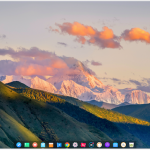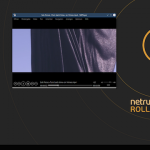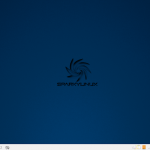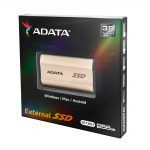Red Hat Enterprise Linux 7.4 is here

Red Hat, Inc is a wonderful example of how a company can be successful with open source solutions. There is this misguided stereotype that Linux and open source are just hobbies and that contributors are typically anti-social misfits coding in mom's basement. If you believe such foolishness, I feel bad for you. Actually, Red Hat, Inc has made billions with open source, and its RHEL distribution is an excellent choice for the enterprise.
Today, RHEL (Red Hat Enterprise Linux) reaches version 7.4. It can be had immediately so that IT departments can begin testing. Once everything checks out, they can roll out to company machines. It has many improvements, including NVMe Over Fabric, a preview of System Roles, and more.
Microsoft removes 'beta' tag from 'Windows Subsystem for Linux' in Fall Creators Update

As Windows 10 continues to disappoint some users, Microsoft is increasing its focus on Linux. Whether or not the company will ever take the big step of making its own distribution based on the kernel remains to be seen. With that said, the company has sort of come close -- it has allowed Linux to infiltrate its beloved Windows operating system by way of the "Windows Subsystem for Linux" feature. Bill Gates and Steve Ballmer would probably be rolling in their graves right now -- if they weren't alive, of course.
Today, Microsoft takes its commitment to Linux a bit further. You see, it has announced that "Windows Subsystem for Linux" will be shedding its "beta" designation in Windows 10 Fall Creators Update. In fact, the Beta tag has already been removed in Windows 10 Insider Build 16251. In other words, the beta label on the feature has been taken off in a beta version of the operating system. Confused? Welcome to the party, pal!
Ubuntu Linux 17.10 'Artful Aardvark' Alpha 2 is ready for testing

Ubuntu is one of the best Linux distributions around. What? You thought it became insanely popular by accident? Actually, its success is bred from being stable, easy to use, and having a really great community for beginners. Not to mention, it has many different "flavors" (desktop environments), allowing the user to find the best experience based on their preferences.
Today, the upcoming version of Ubuntu -- version 17.10 which is named named "Artful Aardvark" -- celebrates a new milestone. While not yet in beta status, it has reached the second alpha stage; the stable version is not due until October. While not all desktop environments are available at this point -- GNOME is absent, for instance -- there are several excellent options for testers, such as MATE, Budgie, and KDE.
WikiLeaks reveals CIA's Imperial hacking project targeting Mac and Linux

WikiLeaks has published the latest of its Vault 7 CIA leaks, this time looking at a project going by the name Imperial. The project is made up of three tools: Achilles and SeaPea which target OS X, and Aeris which targets various flavors of Linux, including RedHat, Debian and CentOS.
User guides relating to the two Mac tools date from mid-2011 and show they can be used to Trojanize an OS X disk image or install a persistent rootkit. Aeris was designed to provide a backdoor into Linux-based systems.
openSUSE Leap 42.3 Linux-based operating system is here -- download it now

Variety is both a gift and curse for Linux on the desktop. On the one hand, it is nice that there are so many operating systems based on the kernel from which to choose. On the other, it can sometimes feel like the community is very fragmented. Not only is there tribalism between users of distributions, but desktop environments too. For instance, there is Ubuntu vs. Fedora and KDE vs. GNOME -- much like Coke vs. Pepsi and Chevy vs. Ford. This is just human nature, I suppose.
With all of that said, popular Linux-based operating system, openSUSE Leap, has achieved a new point release. Version 42.3 is now available for download and it should be a good alternative to Microsoft's Windows 10. While it is fairly uneventful on the surface, that is arguably a good thing. You see, the distro focuses heavily on stability -- rather than being bleeding edge and sexy -- which many users wisely appreciate. There are many under-the-hood improvements, however.
Microsoft further pledges Linux loyalty by joining Cloud Native Computing Foundation

Linux is the future, and even closed-source champion Microsoft has gotten onboard. The Windows-maker is not only contributing to many open source projects, but developing software for the Linux desktop, with programs such as Skype. You can even install Linux distributions from the Windows Store nowadays. Hell, the company has even created a version of Microsoft Office that runs on Linux by way of Android! Yes, Google's mobile operating system is Linux. Android is also what effectively killed the much maligned Windows Phone, so Microsoft clearly has no problem with joining forces with prior "enemies."
Today, Microsoft further pledges its loyalty to Linux and open source by becoming a platinum member of the Cloud Native Computing Foundation. If you aren't familiar, the CNCF is a part of the well-respected Linux Foundation (of which Microsoft is also a member). With the Windows-maker increasingly focusing its efforts on the cloud -- and profiting from it -- this seems like a match made in heaven. In fact, Dan Kohn, Executive Director of the foundation says, "We are honored to have Microsoft, widely recognized as one of the most important enterprise technology and cloud providers in the world, join CNCF as a platinum member."
deepin 15.4.1 Debian-based Linux distribution now available for download

So many Linux distributions, so little time! Today, yet another operating system based on the kernel gets a new version. This particular distro, called "deepin" is a bit controversial, as it comes from China -- a country not known for human rights or user privacy. Since the OS is largely open source, I am not really worried, but I can respect people that are wary of spying, however.
This new version of deepin is 15.4.1. I know what you are thinking -- this is just a point release, is it really interesting? Actually, yes! There are quite a lot of new features and fixes, making this essential for existing users of the operating system. Those looking to try it for the first time -- maybe because they are dissatisfied with Windows 10 -- are in for a treat, as it has quite the unique and elegant user interface, delivering a very positive experience. Since it is based on the great Debian, you know that it will be rock solid.
Netrunner Rolling Arch/Manjaro-based KDE Plasma Linux distro gets refreshed ISO

While GNOME is my favorite desktop environment, I don't hate KDE. Actually, I rather love Plasma when it is done right. Case in point, I absolutely adore Netrunner -- the best KDE-focused Linux-based operating system. Technically, there are two versions of the OS -- the "regular" variant based on Debian and a rolling release based on Arch/Manjaro.
Today, after more than a year, Netrunner Rolling gets a refreshed ISO. This time, we have Netrunner Rolling 2017.07. Some highlights include SMPlayer becoming the default music and video handler, while SUSE Imagewriter is replaced by the KDE Neon variant.
SparkyLinux 5.0 'Nibiru' Debian-based rolling release open source distro is here

There are a lot of Linux-based operating systems in the wild, and I suggest trying as many as you can. Think of it like fruit -- apples are great, but you shouldn't stop after just tasting it. The world is full of different choices, such as mangoes, bananas, and oranges. The more you try, the more your knowledge expands. The same can be said of Linux -- even if you really like, say, Ubuntu, you should also test Fedora, Mageia, and more. Expand your mind!
Today, yet another distro hits a major milestone; SparkyLinux achieves version 5.0. Called "Nibiru," it is a rolling release operating system that is based on the popular Debian (using modern testing repos). It aims to be lightweight, with choices of three desktop environments that are easy on resources -- LXQt, MATE, and Xfce. In other words, Sparky can breathe new life into aging computers. If you have meager hardware, you should definitely give it a look.
ADATA announces SE730H 3D NAND USB-C External SSD for Windows, macOS, and Linux

USB-C is the future, and if your computer doesn't have the connector, I feel sorry for you. While it isn't a necessity at the moment, it will be eventually. Luckily, you can sometimes leverage adapters and cables to connect a Type-C device to a machine that is Type-A only.
Speaking of USB-C devices, ADATA has a new 3D NAND External SSD that uses that connector. Called "SE730H," it is the successor to the company's diminutive "SE730." Not only does the new model offer higher capacities, but the 3D TLC NAND should lend to improved longevity. While it uses 3.1 gen 2, the drive tops out at 500MB/s for both read and write. The "H" variant retains the same good looks and MIL-STD-810G/IP68 water and dust proofing as the prior model too.
Mageia 6 Linux distribution now available for download

If you are dissatisfied with Windows 10, there is no shortage of Linux-based operating systems to install as an alternative. In fact, some people -- including yours truly -- think there are too many distros, but I digress. While Ubuntu is always a fine choice, it is not the only game in town. If you are interested in becoming a Linux desktop user, you shouldn't be scared of exploring different options.
A fairly popular operating system with in-the-know Linux users (that doesn't get enough attention) is Mageia. After a long time, the newest version of the community-driven distro is finally here. Mageia 6 can be had today with your choice of several excellent desktop environments -- GNOME (3.24.2), KDE Plasma (5.8.7), Xfce (4.12.1), Cinnamon (3.2.8), MATE (1.18), and LXQt (0.11). It comes with a fairly modern version of the Linux kernel, 4.9.35, and LibreOffice 5.3.4.2. Since it is impossible to please everyone, there are two web browsers included by default -- Firefox 52.2.0 ESR and Chromium 57.
Fedora 26 Linux distro available for download

As a Linux workstation user, I have been using Fedora 26 as my main distro for months now -- first the alpha and then the beta. While it is never suggested to use a pre-release operating system for anything other than testing, at no point did I encounter any apparent bugs -- impressive, right?
Today, Fedora 26 sheds its pre-release status and becomes available for download as a stable release. GNOME fans are in for a big treat, as version 3.24 is default. If you stick to stable Fedora releases, this will be your first time experiencing that version of the desktop environment since it was released in March. Also new is LibreOffice 5.3, which is an indispensable suite for productivity. If you still use mp3 music files (I've moved onto streaming), support should be baked in for both encoding and decoding.
WikiLeaks: CIA steals SSH credentials from Windows and Linux with BothanSpy and Gyrfalcon tools

The latest addition to WikiLeaks' Vault 7 cache of CIA tools and documents gives details of tools used by the agency to attack Windows and Linux computers. The BothanSpy and Gyrfalcon projects can be used to intercept and exfiltrate SSH (Secure Shell) credentials.
BothanSpy is used to target Windows, while Gyrfalcon is used for Linux machines, with both working in different ways. A number of popular distros can be hit by Gyrfalcon, including CentOS, Debian, RedHat, openSUSE and Ubuntu, and both tools function as implants that steal credentials before transmitting them to a CIA server.
Linux is not as safe as you think

There is a notion by many people that Linux-based operating systems are impervious to malware and are 100 percent safe. While operating systems that use that kernel are rather secure, they are certainly not impenetrable. In fact, users are arguably less safe when they believe that stereotype, since they could be less vigilant.
Many of these same people view Windows as being Swiss cheese-like. With that said, would you be surprised if I told you that threat methods for Linux increased an astonishing 300 percent in 2016, while Microsoft's operating systems saw a decrease? Well, according to a new report, that is true.
Linux Mint 18.2 'Sonya' Ubuntu-based distro is here with Cinnamon, Mate, KDE, and Xfce

Another day, another distro! Today, Linux Mint 18.2 achieves stable release. While the usual desktop environments, Cinnamon and Mate, are available immediately, so too are both KDE and Xfce. It is nice to see all four of these flavors released at once, as sometimes the Mint Team opts to stagger them.
Code-named "Sonya," this operating system is based on Ubuntu 16.04 which is a long term support version. This means Linux Mint 18.2 will be supported until 2021. The kernel is fairly modern at version 4.8. To further highlight the continuing death of optical media, the excellent Brasero is no longer being included by default.
© 1998-2025 BetaNews, Inc. All Rights Reserved. Privacy Policy - Cookie Policy.